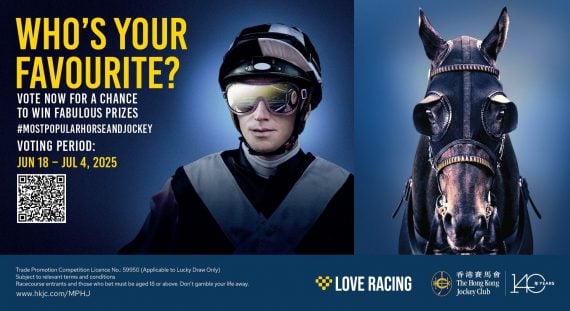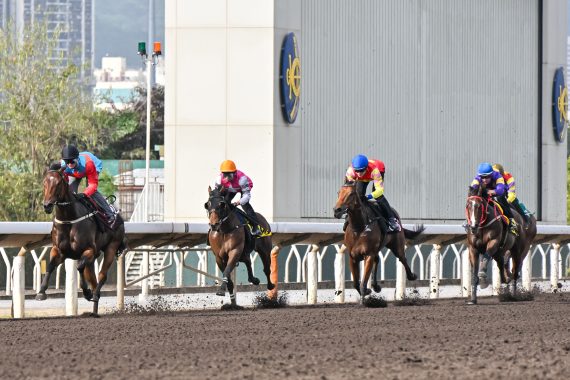The new Polytrack training surface at Randjesfontein was officially opened by Phumelela’s racing executive Patrick Davis and champion trainer Mike de Kock on Wednesday with the ribbon-cutting ceremony attended by around 100 people, including Larry Wainstein, chairman of the Racing Association which owns Randjesfontein, jockeys, the media and trainers from as far afield as Port Elizabeth.
.
Five of Mike Azzie’s horses galloped on the new track and seemed to enjoy working on the synthetic surface.
Randjesfontein trainers are thrilled to have an all-weather surface on which to train their horses, and De Kock, whose Joburg string is based at the Midrand training centre, quipped: “This will definitely give us an advantage over trainers based at Turffontein and the Vaal.’’
.
Having had experience training on many kinds of tracks all over the world, De Kock gave the Randjesfontein trainers a few invaluable insights into the Polytrack, like: “Horses go really fast on this surface, so riders must keep a tight hold on them or they might injure themselves,’’ and “sometimes horses who are worked on Polytrack can be a gallop short going to the races’’.
His overall advice was that the Polytrack needed to be used carefully in conjunction with other training tracks and that it would be a matter of trial and error for each trainer.
.
The Randjesfontein Polytrack training track, which cost R7 million to install, is a precursor to Phumelela installing an all-weather racing surface on the Highveld – possibly replacing the inside track at Turffontein.
“We need to see how it handles the harsh Highveld climate,’’ said Davis. “Although there are 16 Polytrack racing surfaces in the world – the latest is being installed at Chantilly in France – none has been built this high above sea level and we need to see whether Joburg’s altitude and harsh climate affects its performance.’’
The training track, which replaced the under-utilised Trackmaster surface, is 2000m in circumference and five metres wide. While many of the horsemen who attended the opening were concerned that it might not be wide enough when they first inspected the track, two horses looked comfortable galloping side by side. An outside rail may still be put up and the strip around it will be grassed.
Phumelela’s senior track staff started investigating all-weather surfaces 2½ years ago. They all agreed that Polytrack, the oldest and most reputable manufacturer of synthetic tracks, was the way forward. Martin Collins, the man who invented Polytrack, has kept a close eye on proceedings throughout and will continue to monitor the track.
The Polytrack mix was specially formulated based on Collins’ international experience of what suits poly-training best. “It is much faster than normal sand training tracks, but slower than a synthetic racing surface,’’ said Davis, adding that a Gallopmaster, tailor-made to condition Polytrack racing and training surfaces, has been imported from England. “We will be following the maintenance and conditioning specifications supplied by Collins to the letter to ensure the success of the track.’’
.
Work started earlier this year when the Trackmaster track was removed down to its solid base. A drain was cut down the middle of the track round the full circumference with outlets every 25m, alternating between surface water and deeper seepage through an intricate drainage system.
A layer of large stones was then laid and a porous “tarmac’’ poured to bind them together.
“Before the Polytrack fibres were applied, it looked just like a tarred road,’’ said Davis. “This level of the track has to be strong enough to bind the stones, porous enough to allow the water through and thick enough to prevent the Poly-fibres from seeping into the drainage system and clogging up it up.
“The track is properly cambered and the falls are obviously correct so the water runs away quickly through the drains.
“Before the fibres were laid, we tested the effectiveness of the porous tarmac base, releasing 4,000 litres of water on to the track from a tanker. It was an absolute deluge, but the water flowed straight through and was running out of the drains within seconds.
“Even with the 150mm layer of Polytrack surface laid, the track drains very quickly, which is why this surface has been successful worldwide as it is truly all-weather.’’
Azzie, who has had Polytrack surfaces in his lunge rings for the last 18 months, commented: “I like it and I’ve had good reports back from the jockeys, who say it’s a nice surface. Trainers and work riders must be careful that they don’t overdo it. The track is very quick and you don’t want horses coming off the bridle. I told the apprentices who rode my horses at the opening that they must do it at half-pace and hard-held.
“I use the beach track a lot, but there is definitely a place for the Polytrack, especially when it rains because I’m sure it’ll drain very well.’’








